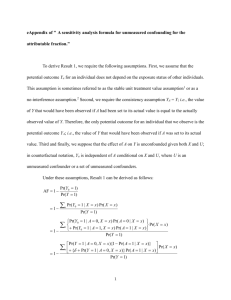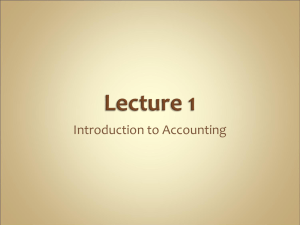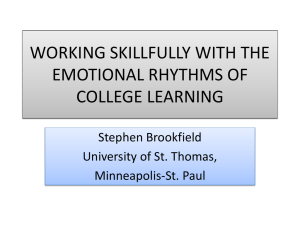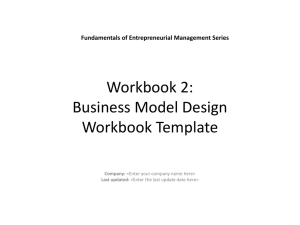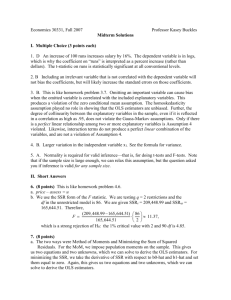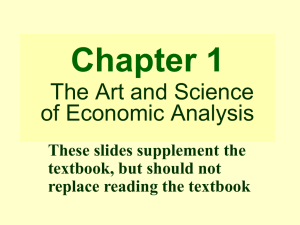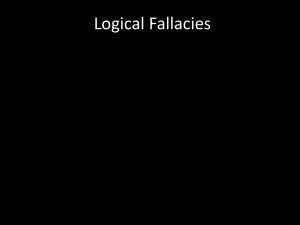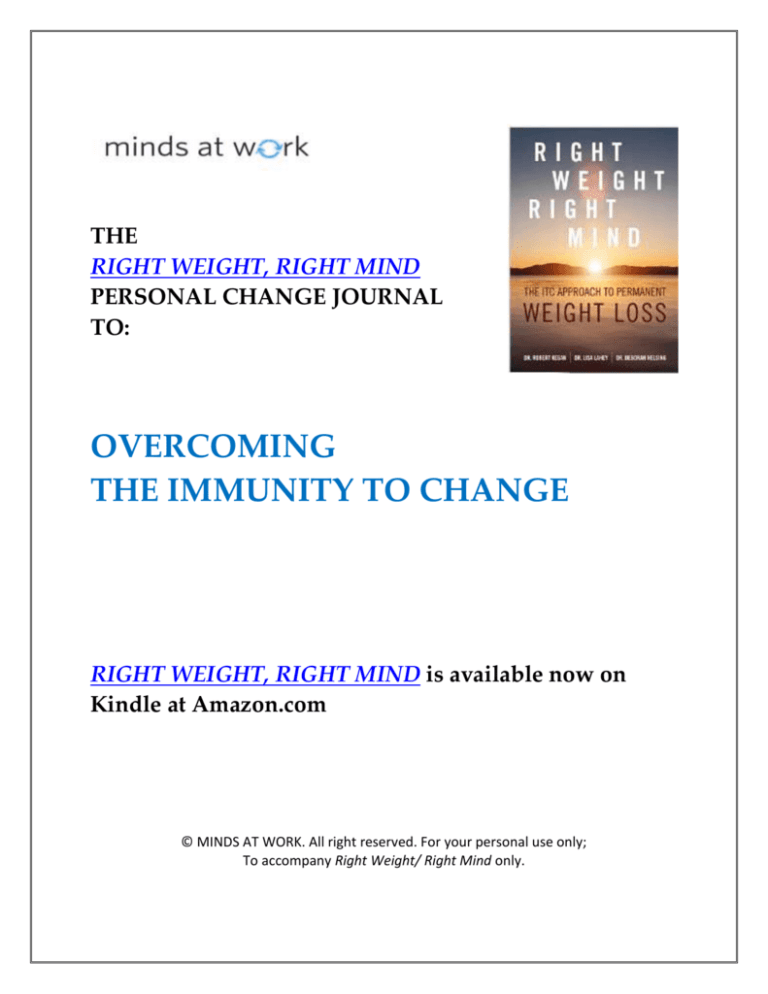
THE
RIGHT WEIGHT, RIGHT MIND
PERSONAL CHANGE JOURNAL
TO:
OVERCOMING
THE IMMUNITY TO CHANGE
RIGHT WEIGHT, RIGHT MIND is available now on
Kindle at Amazon.com
© MINDS AT WORK. All right reserved. For your personal use only;
To accompany Right Weight/ Right Mind only.
Introduction to
Your Personal Change Journal to
Overcoming your Immunity to Change (ITC)
This is a purpose-driven journal intended to accompany you as you read Right Weight/
Right Mind. We don’t just want you to read the book; we want you to do the work that
will help you overturn your immunities! The biggest purpose of the journal is to
support you to meet your improvement goal, as well as other areas in which your Big
Assumptions operate. In the short-term, it is to help guide you so that you gain greater
and greater objectivity to your limiting Big Assumption (one dimension of your
mindset that currently keeps you from being able to accomplish your health goals).
As you will see, the format of the journal consists of specific reflective process exercises
to work on over the next few months. We strongly encourage you pick up each one
only as you are ready, and as the book instructs you to. Give yourself time to reflect
carefully and deeply on each one – they aren’t a checklist to complete as quickly as you
can. As we emphasize in the book, changing your mind takes time and concerted effort.
This is your opportunity to apply the ideas to your personal situation, your own mind,
your own behavior. As we explain in the introduction to this book, a bridge to take you
from where you are to where you want to be doesn’t get you anywhere if you don’t
walk over it.
This journal provides the structure for you to take that walk yourself. Make the journal
your own by printing it out and writing directly into it, or typing directly into it, or
putting portions on your phone—whatever will work best for you!
Here is where your walk toward improved health will take you:
© MINDS AT WORK. All right reserved. For your personal use only;
To accompany Right Weight/ Right Mind only.
2
Self-Observations: Tuning in to The Big Assumption in Action &
Observing Counter-Examples of the Big Assumption: Deepen your
understanding of your Big Assumption, including when it “runs” you and when it is
inaccurate. Draw on the results of these observations to make your ITC map and Picture
of Progress more inclusive of what you are learning.
Picture of Progress: Envision what full success looks like in achieving your Column
1 goal as you imagine no longer being captive of your Big Assumption(s).
The Biography of the Big Assumption: When did it get started? What is its
history? Reflect on the current relevance of your Big Assumption by understanding
when, where and how it originated. By looking back with your current capabilities as
an adult on the origin of your Big Assumption, you may develop a more objective
relationship to your Big Assumption.
Testing the Big Assumption: Intentionally behave counter to how your Big
Assumption would have you act, see what happens, and then reflect on what those
results tell you about the certainty of your Big Assumption. Draw on the results of your
tests to make your ITC map and Picture of Progress more inclusive of what you are
learning. Test your Big Assumption once, twice, three times or as many times as you
need until you are confident of when, if at all, it applies.
Designing Tests of the Big Assumption
Running Tests of the Big Assumption
Interpreting Tests of the Big Assumption
Taking Stock: Assess the current status of your Big Assumption, how to maintain
your progress, and how to guard against future slippage.
We hope you will keep us apprised of your travels. And feel free to tell us about how
we can improve the journal.
We wish you well on your journey! All best, Bob, Lisa and Deb
© MINDS AT WORK. All right reserved. For your personal use only;
To accompany Right Weight/ Right Mind only.
3
Observing the Big Assumption in Action &
Observing Natural Challenges to the Big Assumption
What happens, and fails to happen, as a result of holding your Big Assumption as true?
The idea in the first part of this exercise is to keep track of situations where you can see
(or have recently seen) your Big Assumption at work—e.g., influencing how you look at
things, feel about things, take action (or not take action), make choices, spend your
energies, etc. These situations may be so abundant that it will make sense for you just
to keep track of the several most salient instances. Or, there may only be a few such
situations that occur. Feel free to confine your observations to the work sphere or make
note of wherever you see your Big Assumption influencing you.
Directions: For the next two weeks, do not attempt to change your behavior or your
Big Assumption. Do attend to its influence in your life. Specifically: What do you notice
does or does not happen as a result of holding your Big Assumption as TRUE? Write
two things down: 1) what happened (including inside of you, what you were thinking
and feeling), and 2) what costs did you incur?
© MINDS AT WORK. All right reserved. For your personal use only;
To accompany Right Weight/ Right Mind only.
4
Your workspace:
Describe situation where Big
Assumption got in your way
Describe costs to you (“what did it block,
prevent or impair?”)
Situation #1: Click here to enter text.
Situation #1: Click here to enter text.
Situation #2: Click here to enter text.
Situation #2: Click here to enter text.
Situation #3: Click here to enter text.
Situation #3: Click here to enter text.
Situation #4: Click here to enter text.
Situation #4: Click here to enter text.
© MINDS AT WORK. All right reserved. For your personal use only;
To accompany Right Weight/ Right Mind only.
5
Once you have a few examples of seeing your Big Assumption in action (three or more),
you can start to look for patterns and themes. Take a look across all your examples and
ask yourself the following kinds of questions:
Observing the Big Assumption
in Action: Reflections
Reflection Question
Your Response
What stands out to you? Click here to enter text.
What do you notice most
of all?
What does your B.A. do Click here to enter text.
to you? What thoughts,
feelings, perspectives,
actions, & choices do
you experience as a
consequence of your
B.A.?
Click here to enter text.
Do you see patterns i.e.,
are there particular types
of people, content areas,
circumstances (inside
yourself or in the
environment) that
activate your Big
Assumption?
Click here to enter text.
Any “ah ha”?
Do you notice any
additional Big
Click here to enter text.
© MINDS AT WORK. All right reserved. For your personal use only;
To accompany Right Weight/ Right Mind only.
6
Assumptions you are
making? If so, add these
to your 4-col map.
What are your key take- Click here to enter text.
aways? Any implications
for your Picture of
Progress? If so, add
these.
© MINDS AT WORK. All right reserved. For your personal use only;
To accompany Right Weight/ Right Mind only.
7
Observing Naturally Occurring Counters to the Big
Assumption
In addition to looking for examples of your Big Assumption in action, we invite you to
be on the lookout for experiences that lead you to question the truthfulness or
widespread applicability of your Big Assumption. Because of the “certainty” quality of
our Big Assumptions (our difficulty in considering how things could be any “other”
than this), our Big Assumptions actually inform what we see and how we see the world.
They lead us to attend systematically to certain data and to systematically avoid or
ignore other data.
Directions: Actively search for data and experiences—in your professional or
personal life—that would counter or cast doubt on the absolute quality of your Big
Assumption. Take notes about specific situations, interactions, feelings, etc. Do not
intentionally change anything you do or think relative to your Big Assumption, only take
account of any spontaneously occurring experiences that might cast doubt on their absolute
quality. Explain how you see the situation and what happened as potential evidence that
your Big Assumption is not 100% accurate.
© MINDS AT WORK. All right reserved. For your personal use only;
To accompany Right Weight/ Right Mind only.
8
Your workspace:
Describe situation that casts doubt on
your Big Assumption (including your
thoughts & feelings)
How does what happened cast doubt on
the absolute truth of your Big
Assumption?
Counter Observation #1: Click here to enter
Counter Observation #1: Click here to enter
text.
text.
Counter Observation #2: Click here to enter
Counter Observation #2: Click here to enter
text.
text.
Counter Observation #3: Click here to enter
Counter Observation #3: Click here to enter
text.
text.
Counter Observation #4: Click here to enter
Counter Observation #4: Click here to enter
text.
text.
Once you have at least three observations of challenges and counters to your Big
Assumption, it’s time to step back to see what you can learn from these about your Big
Assumption and your mindset, more generally. Take a look across all your examples
and ask yourself the following kinds of questions:
© MINDS AT WORK. All right reserved. For your personal use only;
To accompany Right Weight/ Right Mind only.
9
Observing Counter Examples of the
Big Assumption: Reflections
Reflection Question
What stands out to you?
What do you notice most of
all?
What thoughts, feelings,
perspectives, actions, and
choices did you experience
in these instances?
Do you see any patterns? Is
the same doubt about your
Big Assumption raised
across the different
instances? Is there anything
in common across the
examples that might account
for the counter-data? (e.g.,
particular types of people,
content areas, circumstances,
inside yourself or in the
environment).
Did you act differently than
your Big Assumption would
have you act? If so, what did
you do? What are your
hunches about why you
acted differently? Was it
because of something “out
Your Response
Click here to enter text.
Click here to enter text.
Click here to enter text.
Click here to enter text.
© MINDS AT WORK. All right reserved. For your personal use only;
To accompany Right Weight/ Right Mind only.
10
there,” or something you
said to yourself, or some
combination of the two, or
anything else?
Click here to enter text.
What does the counter-data
suggest to you about your
Big Assumption?
Click here to enter text.
What are your key takeaways? Are there any
additions or revisions you’d
want to make to your Picture
of Progress based on these
observations?
© MINDS AT WORK. All right reserved. For your personal use only;
To accompany Right Weight/ Right Mind only.
11
Picture of Progress
This exercise is designed to help you plan for your success in meeting your Col. 1
Improvement Goal. Its purpose is to have you envision what success looks like, both
short-term and long-term, in terms of how you think, feel and act, while drawing on your
insights into your immune system. The main focus here is on you, and your increasing
effectiveness in meeting your goal. To be clear, the purpose of identifying these
progress steps is NOT to begin immediately trying to accomplish them. The whole
point of the immune system concept is that change is not a straight-forward matter as
people often think. It may be useful to periodically review and revise your Picture of
Progress as you discover new thoughts and feelings through later exercises.
Why we invite you to create this personalized picture of emerging success:
A clear picture of success provides direction. You are more likely to get where
you want to go the more you know where you want to go.
Being able to visualize what full success looks like--like athletes do—also
increases the likelihood of being successful as you imagine effectively engaging
in targeted new mindsets & behaviors. This often releases energy and optimism
for improvement, important allies for personal change.
You can safely explore how revising your Big Assumption can lead to new
mindset & behavior options. In doing so, you may develop potential ways you
want to test your Big Assumption.
You can use your success picture to identify what you may need to learn to be
successful. In this way, you plan for success.
A completed Picture of Progress provides a realistic image of the pace of
improvement. Lasting change depends on small, incremental steps, taken over
time, with success building upon success.
© MINDS AT WORK. All right reserved. For your personal use only;
To accompany Right Weight/ Right Mind only.
12
Directions: Review your 4-column map before you start this exercise to remind yourself of your
immune system and Big Assumption(s). Feel free to also look at the example provided below and
Tips if you want more information.
1. In the far left column, enter your Col. 1 Improvement Goal and Big Assumption(s) that most
get in your way.
2. Move to the last column, envisioning “Success”: What would it look like if you were to be
fully successful in realizing your Col. 1 Improvement Goal? Allow yourself to imagine you are
freer of your Big Assumption as you do this. Be as specific as you can along three dimensions:
what would you be thinking? Feeling? Doing?
3. (Work backwards from there). What would constitute “significant progress” in moving
towards that success? What would enable you to realize more of your Col. 1 goal? Again,
imagine you are freer of your Big Assumption as you develop this picture of your new
thoughts, feelings and actions. Consider incorporating behaviors (cognitive, social, or
emotional) that will help you catch yourself when you are falling into your default mode and
get you back on track. Enter your answer in the column entitled, “Significant Progress.”
4. Then answer the question, “What first steps will move you forward towards your picture of
success?” It is often helpful early in a change process to tell at least one person about your
intentions. Consider whether there is someone you want to talk with and even ask for his or
her support. Enter your answers in the column entitled, “1st Steps Forward.”
© MINDS AT WORK. All right reserved. For your personal use only;
To accompany Right Weight/ Right Mind only.
13
Picture of Progress
Column 1 Goal &
Big Assumption(s)
1st Steps Forward
Significant Progress
Success
Cognitive: What You Think
Emotional: What You Feel
Action: What You Do
Focuses on you (not others)
Incorporates the what and the how of new behaviors
Generates potential future ideas for testing your Big Assumption
Relates beyond adaptive requirements to technical ones, where needed
Connects to your Big Assumption
© MINDS AT WORK. All right reserved. For your personal use only;
To accompany Right Weight/ Right Mind only.
14
Your workspace:
Picture of Progress
Column 1 Goal &
Big Assumption(s)
Click here to enter
text.
1st Steps Forward
Click here to enter text.
Significant Progress
Success
Click here to enter text. Click here to enter text.
© MINDS AT WORK. All right reserved. For your personal use only;
To accompany Right Weight/ Right Mind only.
15
Charting the Biography of Your Big Assumption
Part 1: The Indirect Approach
Directions: Thinking back over the first 15 or 16 years of life, identify a handful (five or
six) memories that continue to stick with you and that were in some way negative
(disturbing, puzzling, made you angry, upsetting, scary) in quality. They don’t have to
be events that were momentous – include events that may now seem tiny, mundane,
common for many young people to experience in their lives. If these events were called
up for you in your reflection, include them in your list. Record these events in column
one below.
Once you have listed the headlines of these events in column one, complete columns 2-4.
Column 4 is asking what you think you (that child who was 4 or 7 or 13) concluded at
that time about yourself and the world. What were the lessons you learned then from
those experiences?
Your workspace:
Events (the
headlines)
What I was thinking
(at that time)
What I was feeling
(at that time)
Lessons learned/
conclusions drawn
(at that time)
Click here to enter
text.
Click here to enter text.
Click here to enter text.
Click here to enter text.
Click here to enter
text.
Click here to enter text.
Click here to enter text.
Click here to enter text.
© MINDS AT WORK. All right reserved. For your personal use only;
To accompany Right Weight/ Right Mind only.
16
Click here to enter
text.
Click here to enter text.
Click here to enter text.
Click here to enter text.
Click here to enter
text.
Click here to enter text.
Click here to enter text.
Click here to enter text.
Click here to enter
text.
Click here to enter text.
Click here to enter text.
Click here to enter text.
Directions: What connections, if any, do you make between the fourth column on
your Biography Chart and the fourth column on your ITC map? Write your answers in
the table below.
Reflection Question
In what ways does the
biography (or biographic
moment) explain your Big
Assumption?
Does your biography (or
biographic moment)
illuminate any additional Big
Your Response
Click here to enter text.
Click here to enter text.
© MINDS AT WORK. All right reserved. For your personal use only;
To accompany Right Weight/ Right Mind only.
17
Assumptions you might be
making? Do you notice any
definitive, i.e., this- alwayshappens, quality?
To what extent do you believe
and feel the situation or events
from your biography (or
biographic moment) apply to
your current life? If you think
they do, how so?
Click here to enter text.
Writing the Biography of the Big Assumption
Part Two: The Direct Approach
Directions: What is the “history” of your Big Assumption? When was it born? Are
there specific situations, feelings, important events or moments you can recall? How
long has your BA been around? What were some of its critical turning points? Perhaps
there is one story, event, snapshot, or episode that captures something from your past
that may have gotten your Big Assumption started or served to emphasize its
importance. Again, do not intentionally change anything you do or think relative to
your Big Assumption. Enter your answers in the workspace below.
© MINDS AT WORK. All right reserved. For your personal use only;
To accompany Right Weight/ Right Mind only.
18
Your workspace:
Click here to enter text.
If you wrote a direct biography, here are a few questions you might find useful:
Reflection Question
In what ways does the
biography (or biographic
moment) explain your Big
Assumption?
Does your biography (or
biographic moment) illuminate
any additional Big
Assumptions you might be
making? Do you notice any
definitive, i.e., this- alwayshappens, quality?
To what extent do you believe
Your Response
Click here to enter text.
Click here to enter text.
Click here to enter text.
© MINDS AT WORK. All right reserved. For your personal use only;
To accompany Right Weight/ Right Mind only.
19
and feel the situation or events
from your biography (or
biographic moment) apply to
your current life? If you think
they do, how so?
© MINDS AT WORK. All right reserved. For your personal use only;
To accompany Right Weight/ Right Mind only.
20
Designing a Test of Your Big Assumption
Testing Big Assumptions is at the heart of overturning an immunity to change. The
purpose of a test is to see what happens when you intentionally alter your usual behavior in
order to learn about the accuracy of your Big Assumption. (In other words, the purpose of a
test is to “get information” not immediately to improve or “get better.”) Everything you
have been doing up until now is to better prepare you to design, run and make sense of
the results of testing your Big Assumption.
The goal of this exercise is for you to design a test of one of your Big Assumptions. It is
preparation for actually running your first “formal” test. We will have a phone meeting
to look together at the extent to which your test meets the criteria below.
A good test meets S-M-A-R-T criteria:
1) S-M: it is important that your experiment be both safe and modest. Safe
means that if the worst case outcome were to occur, you could live with it!
Modest means that you can the test is relatively easy to carry out (ideally, it
doesn’t require you to go out of your way at all, but rather is an opportunity to
do something different in your normal day). It can also mean you make a small
change in what you do.
2) A: a good test will be actionable in the near-term. This means that you are able
to carry it out within the next week or so. You can easily imagine a setting or
upcoming situation in which to run your test.
3) R-T: finally, a good test researches the question, “how accurate is my Big
Assumption?” and, like any good research, it requires collecting data (including
data that would qualify your assumption or call it into doubt). In addition to
how people react to you, your feelings can be a very rich data source. The test, in
fact, tests your Big Assumption. A “test” should not be some clever way to prove
that your Big Assumption is true! Your test should be designed so that it can
generate disconfirming data, if it exists.
© MINDS AT WORK. All right reserved. For your personal use only;
To accompany Right Weight/ Right Mind only.
21
Directions:
Option 1: Start with the end in mind: what data would lead you to doubt your Big
Assumption? (If you can’t imagine what data could challenge or cast doubt on your
assumption, then you don’t have a testable assumption.) Work backwards from there to
figure out what action you could take that could generate that data.
Option 2: What behavior you could change (start or stop doing) that would get you useful
information about the accuracy of your Big Assumption? Here are some options from
which to choose:
o Alter a behavior from your Column 2
o Perform an action that runs counter to your Column 3 Commitment
o Start directly from your Big Assumption (Column 4): “What experiment
would give me information (as to whether, e.g., the if-then sequence built
into the assumption is really so certain)?”
o Go to your Picture of Progress and enact a version of a next recognizable
step
o Go to your Observations of Counters to your Big Assumption and try an
intentional version of one of these
Whichever option you choose, design your test so that it meets the S-M-A-R-T criteria.
© MINDS AT WORK. All right reserved. For your personal use only;
To accompany Right Weight/ Right Mind only.
22
Your workspace to Design
Test #1:
My Big Assumption
Says:
So I will (Change my
Behavior This
Way)…
And collect the
following data …
In Order to Find Out
Whether …
Click here to enter text.
Click here to enter text.
Click here to enter text.
Click here to enter text.
Is there anyone to
whom you’d like
to give a “headsup” or ask to serve
as an observer
who can give you
feedback after the
fact?
Click here to enter text.
© MINDS AT WORK. All right reserved. For your personal use only;
To accompany Right Weight/ Right Mind only.
23
Review your test on these criteria:
Yes
Not
Sure
Click here
to enter
text.
Click here
to enter
text.
Is the data relevant to your Big Assumption?
Click here
to enter
text.
Click here
to enter
text.
Does it have face-validity? (The test actually tests your Big Assumption)
Click here
to enter
text.
Click here
to enter
text.
Click here
to enter
text.
Click here
to enter
text.
Click here
to enter
text.
Click here
to enter
text.
Click here
to enter
text.
Click here
to enter
text.
Is it safe? (If the worst case were to happen, you could live with the
results).
Are the data sources valid? (No one is either out to get you or wants to
protect or save you).
Might it “re-true” your Big Assumption? (Is it designed so that it surely will
lead to bad consequences, just as your BA tells you? Are you setting yourself
up to fail? Is there any data you could collect that could disconfirm your
BA?)
Is it actionable in the near-term? (e.g., the people or situation you need in
order to enact the test are available, you are reasonably certain you know
how to do what you plan, and you can run the test within the next week or
so).
© MINDS AT WORK. All right reserved. For your personal use only;
To accompany Right Weight/ Right Mind only.
24
Running and Interpreting Your Test
Designing an effective test of your Big Assumption is one step. Running it is a next step.
Now is the time to look at your data for the sole purpose of understanding what it
suggests about your Big Assumption. Remember, the purpose of running a good test
is not to see whether you improved, i.e., whether your behavior change “worked”
(although this is not unimportant!), but rather to use the test results to inform your
Big Assumption. You will know you are on track with this exercise if you can see what
aspect of your Big Assumption, if any, is confirmed by the data, and what aspect, if any,
is disconfirmed.
Here are a few tips to keep in mind when you interpret your data:
The point of a test is not to outright reject a Big Assumption, but rather to help
sharpen its contours so you have a realistic, data-based version of when, where
and with whom your Big Assumption is relevant. (Even relatively modest
changes to a Big Assumption can overturn an immunity to change.)
No one experiment is likely to be conclusive about a Big Assumption.
When our Big Assumptions have a powerful hold on us, they direct us to
predictable interpretations—ones that keep the Big Assumption alive and well!
An antidote to this tendency is to push yourself to generate at least one
additional interpretation of the data. (If nothing comes to mind, then try this:
Imagine you are someone else, a real person, who happened to be in that exact
situation, and the same things happened. How would this person make sense of
what happened? If that doesn’t get you anywhere, then find a person you trust to
offer his or her interpretation.)
© MINDS AT WORK. All right reserved. For your personal use only;
To accompany Right Weight/ Right Mind only.
25
Directions:
1.
Enter your Big Assumption in the 1st row below.
2.
Then write in the next row what you actually did to test your Big Assumption;
this may be what you planned to do (in which case, you can simply copy the test
design you created) or you may have done something else (which is fine!).
3.
Write what you observed in the 3rd row. This includes what you saw and heard
other people do or say, as well as what you felt inside of yourself.
4.
In the last row, write what you learned about the accuracy of your Big
Assumption
© MINDS AT WORK. All right reserved. For your personal use only;
To accompany Right Weight/ Right Mind only.
26
Your workspace:
Interpreting The Results of Test #1
Click here to enter text.
My Big Assumption
Says:
Click here to enter text.
So in Order to Test it I
Changed my Behavior
This Way:
Click here to enter text.
This is What I
Observed Happening:
Click here to enter text.
And This is What the
data Tells me about my
Big Assumption:
Remember that no one test is likely to be conclusive about a Big Assumption. Often, the
second and third tests are versions of the first one. What differs is the person,
circumstance or level of risk. It is the cumulative weight of several tests that, in most
cases, begins to overturn the person’s Immunity to Change—the whole purpose of these
exercises. Once the Big Assumption no longer has its force, the self-protective Column 3
Commitment is no longer necessary and we stop needing to generate the obstructive
Column 2 behaviors.
© MINDS AT WORK. All right reserved. For your personal use only;
To accompany Right Weight/ Right Mind only.
27
Directions: What are your thoughts about a next test of your Big Assumption? Pick up
on what you’ve learned about your Big Assumption. What next test could you design to
learn more?
This may also be a good time to revisit your Picture of Progress to check whether it
reflects any new thoughts, feelings and behaviors you have access to now that you have
begun to formally test your Big Assumption.
© MINDS AT WORK. All right reserved. For your personal use only;
To accompany Right Weight/ Right Mind only.
28
Your workspace to design a next test: Designing Test #2
My Big Assumption
Says:
So I will (Change my
Behavior This
Way)…
And collect the
following data …
In Order to Find Out
Whether …
Click here to enter text.
Click here to enter text.
Click here to enter text.
Click here to enter text.
Is there anyone to
whom you’d like
to give a “headsup” or ask to serve
as an observer
who can give you
feedback after the
fact?
Click here to enter text.
© MINDS AT WORK. All right reserved. For your personal use only;
To accompany Right Weight/ Right Mind only.
29
Review your test on these criteria:
Yes
Not
Sure
Click here
to enter
text.
Click here
to enter
text.
Is the data relevant to your Big Assumption?
Click here
to enter
text.
Click here
to enter
text.
Does it have face-validity? (The test actually tests your Big Assumption)
Click here
to enter
text.
Click here
to enter
text.
Click here
to enter
text.
Click here
to enter
text.
Click here
to enter
text.
Click here
to enter
text.
Click here
to enter
text.
Click here
to enter
text.
Is it safe? (If the worst case were to happen, you could live with the
results).
Are the data sources valid? (No one is either out to get you or wants to
protect or save you).
Might it “re-true” your Big Assumption? (Is it designed so that it surely will
lead to bad consequences, just as your BA tells you? Are you setting yourself
up to fail? Is there any data you could collect that could disconfirm your
BA?)
Is it actionable in the near-term? (e.g., the people or situation you need in
order to enact the test are available, you are reasonably certain you know
how to do what you plan, and you can run the test within the next week or
so).
A quick reminder of a few tips to keep in mind when you interpret your data:
Can you see contours of your Big Assumption, i.e., “when, where and with
whom” it is and is not relevant?
No one experiment is likely to be conclusive about a Big Assumption.
Can you generate at least one additional interpretation of the data?
© MINDS AT WORK. All right reserved. For your personal use only;
To accompany Right Weight/ Right Mind only.
30
Your workspace to report on the results and interpretation of test #2:
Interpreting Your 2nd Test Results
Click here to enter text.
My Big Assumption Says:
Click here to enter text.
So in Order to Test it I
Changed my Behavior This
Way:
Click here to enter text.
This is What I Observed
Happening:
Click here to enter text.
And This is What the data
Tells me about my Big
Assumption:
© MINDS AT WORK. All right reserved. For your personal use only;
To accompany Right Weight/ Right Mind only.
31
Your workspace to design a next test: Designing Test #3
My Big Assumption
Says:
So I will (Change my
Behavior This
Way)…
And collect the
following data …
In Order to Find Out
Whether …
Click here to enter text.
Click here to enter text.
Click here to enter text.
Click here to enter text.
Is there anyone to
whom you’d like
to give a “headsup” or ask to serve
as an observer
who can give you
feedback after the
fact?
Click here to enter text.
Review your test on these criteria:
Yes
Not
Sure
Is it safe? (If the worst case were to happen, you could live with the
Click here
to enter
text.
Click here
to enter
text.
© MINDS AT WORK. All right reserved. For your personal use only;
To accompany Right Weight/ Right Mind only.
32
results).
Is the data relevant to your Big Assumption?
Click here
to enter
text.
Click here
to enter
text.
Does it have face-validity? (The test actually tests your Big Assumption)
Click here
to enter
text.
Click here
to enter
text.
Click here
to enter
text.
Click here
to enter
text.
Click here
to enter
text.
Click here
to enter
text.
Click here
to enter
text.
Click here
to enter
text.
Are the data sources valid? (No one is either out to get you or wants to
protect or save you).
Might it “re-true” your Big Assumption? (Is it designed so that it surely will
lead to bad consequences, just as your BA tells you? Are you setting yourself
up to fail? Is there any data you could collect that could disconfirm your
BA?)
Is it actionable in the near-term? (e.g., the people or situation you need in
order to enact the test are available, you are reasonably certain you know
how to do what you plan, and you can run the test within the next week or
so).
A quick reminder of a few tips to keep in mind when you interpret your data:
Can you see contours of your Big Assumption, i.e., “when, where and with
whom” it is and is not relevant?
No one experiment is likely to be conclusive about a Big Assumption.
Can you generate at least one additional interpretation of the data?
© MINDS AT WORK. All right reserved. For your personal use only;
To accompany Right Weight/ Right Mind only.
33
Your workspace to report your results and interpretation of test #3:
Interpreting Your 3rd Test Results
Click here to enter text.
My Big Assumption Says:
Click here to enter text.
So in Order to Test it I
Changed my Behavior This
Way:
Click here to enter text.
This is What I Observed
Happening:
Click here to enter text.
And This is What the data
Tells me about my Big
Assumption:
Feel free to design and run additional tests. While you are exploring your Big
Assumption, you may discover that it would be valuable to test another assumption.
That often happens. If so, revisit the test exercises with the new assumption (you might
want to do the self-observations exercises first).
© MINDS AT WORK. All right reserved. For your personal use only;
To accompany Right Weight/ Right Mind only.
34
Taking Stock
You hopefully have seen personal progress towards your improvement goal by this
point in the overcoming-immunities process. You may also be wondering, just about
now, whether you are going to be able to sustain your good progress. We all have had
experiences of slipping back into old habits and patterns, so we can legitimately ask,
“Why should this be any different?”
One way to help yourself not slip back is to consolidate your current progress on
overcoming your immunity. This exercise is designed to help you do just that. By
assessing where you on in the following developmental sequence, you will be able to
make informed choices about what next steps will deepen or anchor your new learning.
Development Sequence for Overcoming Immunities to Change
UNCONSCIOUSLY “IMMUNE”
CONSCIOUSLY “IMMUNE”
CONSCIOUSLY “RELEASED”
UNCONSCIOUSLY “RELEASED”
© MINDS AT WORK. All right reserved. For your personal use only;
To accompany Right Weight/ Right Mind only.
35
Reflecting on where you are in the process of overcoming your immunity to change:
Take a moment now to think about exactly where you are in overcoming your
immunity. To do that, use the following basic descriptions of what it means to be
“Consciously Released” and “Unconsciously Released.”
“Consciously Released”: Testing your Big Assumption(s) and discovering
the conditions under which it is and is not valid is a crucial part of this
development phase. This may include discovering that the Big Assumption is
not warranted in any situation. Often people learn new behaviors and new "selftalk" scripts as a part of this testing process. When you can act on your newly
discovered knowledge to interrupt the Big Assumption (and the old behavior
and self talk patterns associated with it) in those situations where it is not valid,
you are demonstrating the new capacity to be "Consciously Released" from your
Big Assumption. This takes mindful practice. The journey is not a bump-free or
necessarily straight one. It is normal to fall back into old patterns associated with
the Big Assumption. Still, knowing that you're falling back, and knowing how
you can get yourself unstuck are all signs of development. You should also see
that you have made progress towards meeting your Column 1 goal.
"Unconsciously Released": When you no longer need to stop, think and
plan in order to interrupt your Big Assumption, you have developed the capacity
to be "Unconsciously Released" from it. At this point, you automatically act and
think in ways that run counter to your previously held Big Assumption in those
situations where it is not valid. New beliefs and understandings, informed and
developed mindfully throughout the process, have taken the place of the Big
Assumption. You have likely made significant progress, if not full success,
towards meeting your Column 1 goal.
Which of these two descriptions speaks to you? If your self-assessment is that you are
"Unconsciously Released,” then this exercise will be a useful summary of your work to
date. If “Consciously Released” better describes your current relationship to your Big
© MINDS AT WORK. All right reserved. For your personal use only;
To accompany Right Weight/ Right Mind only.
36
Assumption, then you may want to continue with further tests of your Big Assumption
(a good choice especially if you are aware that your Big Assumption grabs hold of you
frequently) and use the results of this exercise to focus those tests. The testing process is
iterative and there is no set number of tests that, if done, will overturn an immune
system. Keep with testing until you no longer feel hooked by your Big Assumption.
Directions: Review this development sequence and comment on where you see
yourself in the sequence at this time. You may find the following questions useful as
you take stock of where you are:
Your workspace:
Where do you see
yourself in the sequence
at this time?
Have you reached any
conclusions, or have any
hunches about
conditions under which
your Big Assumption is
valid? Think about
particular situations –
who, what, where and
when.
Have you reached any
conclusions, or have any
hunches about
conditions under which
your Big Assumption is
invalid? Think about
Click here to enter text.
Click here to enter text.
Click here to enter text.
© MINDS AT WORK. All right reserved. For your personal use only;
To accompany Right Weight/ Right Mind only.
37
particular situations –
who, what, where and
when.
Do you find your Big
Assumption asserting
itself in situations you
know it ought not? If so,
do you have any
generalizations about the
conditions under which
you are likely (more or
less) to find yourself
being sucked into the old
patterns associated with
the Big Assumption?
What still sometimes
hooks you?
Are there key “releases”
(i.e., self-talk that
unhooks you) you have
developed and can use
to help yourself easily
and readily when you
are facing your Big
Assumption in realtime?
To what extent / how
often can you use these
“releases” to help you
from being pulled into
old patterns?
Have you developed
new behaviors or ways
of taking to yourself in
situations that used to
activate your Big
Click here to enter text.
Click here to enter text.
Click here to enter text.
Click here to enter text.
© MINDS AT WORK. All right reserved. For your personal use only;
To accompany Right Weight/ Right Mind only.
38
Assumption?
Think about situations in Click here to enter text.
which you think your
Big Assumption is no
longer accurate. What
new beliefs or
understandings do you
hold about “how things
work” or what will
happen in these
situations?
© MINDS AT WORK. All right reserved. For your personal use only;
To accompany Right Weight/ Right Mind only.
39

